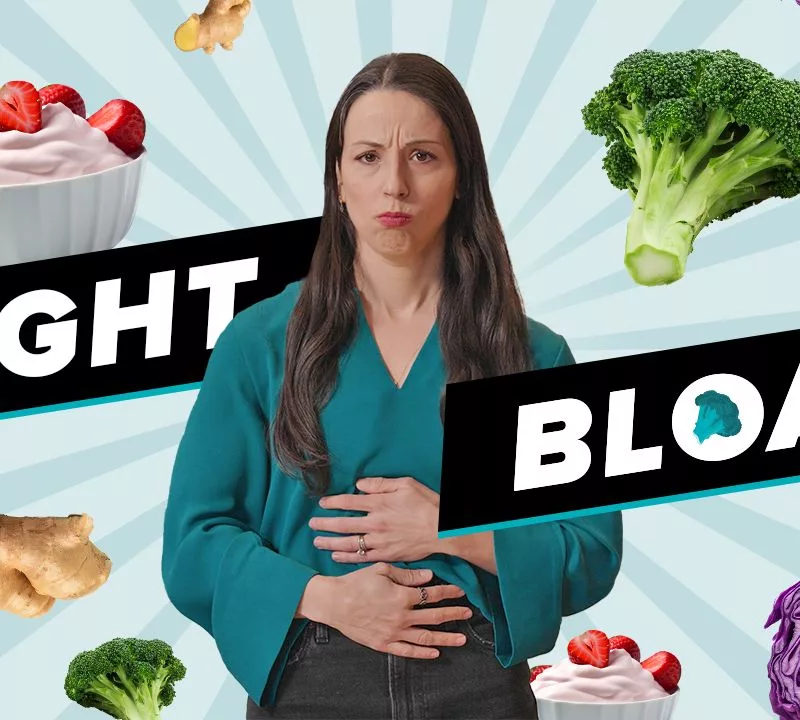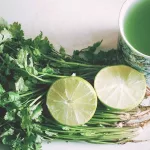Hey there, friend! If you’ve ever felt that uncomfortable “balloon‑like” sensation after a meal, you’re definitely not alone. Millions of us wrestle with stomach bloating causes that pop up out of nowhere, and they can turn a relaxed evening into a restless one. The good news? Most of those causes are totally manageable once you know what you’re dealing with. In the next few minutes we’ll walk through the most common triggers, practical fixes, and when it’s time to call a professional—all in a friendly, no‑jargon style that feels more like a chat over coffee than a medical textbook.
Quick Bloating Checklist
What are the hallmark bloating symptoms?
Before we dive into the why, let’s make sure we’re on the same page about the bloating symptoms you might notice:
- Visible abdominal swelling (your belly looks “full” or rounded)
- A tight, uncomfortable feeling that can range from mild to painful
- Extra gas – either burps or flatulence
- Feeling “full” after just a few bites
- Occasional rumbling or gurgling noises from the gut
How to tell abdominal swelling from other issues?
| Factor | Bloating | Weight Gain | Constipation‑Related Swelling |
|---|---|---|---|
| Onset | Sudden, after meals | Gradual, over weeks/months | Slow, often with hard stools |
| Pain | Crampy, can ease after passing gas | Usually none | Dull, pressure-filled |
| Relief | Burping, passing gas or stool | None without diet/exercise change | Relief after bowel movement |
If your discomfort eases after a quick trip to the bathroom or a good burp, you’re likely dealing with classic bloating rather than something more chronic.
Food Triggers Explained
Which foods are the top gas‑producers?
Let’s get straight to the list that most of us wish we could ignore. Below are the 34 foods most commonly linked to excess gas and abdominal swelling, gathered from eMedicineHealth. If any of these pop up on your plate, you now know why your belly might feel like a balloon.
| Beans & Legumes | Fruits (raw) | Vegetables (cruciferous) | Other Triggers |
|---|---|---|---|
| Beans, lentils, soy | Apples, apricots, bananas, melons, peaches, pears, prunes | Broccoli, Brussels sprouts, cabbage, cauliflower, kale, arugula, turnips | Wheat, dairy, carbonated drinks, beer, red wine, fried/fatty foods, salt, sugar, sugar substitutes, processed foods with hidden lactose |
Why do oligosaccharides in beans and cruciferous veg cause extra gas?
These foods contain complex sugars called oligosaccharides. Our small intestine doesn’t have the enzymes to break them down, so they travel to the large intestine where gut bacteria ferment them. That fermentation releases carbon dioxide, hydrogen, and sometimes methane – the gases you feel as bloating.
Low‑FODMAP foods to watch
If you’ve ever tried a low‑FODMAP diet, you know it can be life‑changing. according to WebMD, the biggest culprits in the FODMAP family are:
- Fructose – found in apples, honey, high‑fructose corn syrup
- Lactose – milk, soft cheeses, ice cream
- Fructans – wheat, onions, garlic
- Galactans – beans, lentils, chickpeas
- Polyols – sorbitol, mannitol (often in sugar‑free gum)
Removing these for a few weeks and then slowly re‑introducing them can help you pinpoint exactly which ones are your personal villains.
Medical Reasons Unveiled
How does IBS cause chronic bloating?
Irregular muscle contractions in the intestines that characterize irritable bowel syndrome (IBS) often trap gas, leading to persistent abdominal swelling. A gastroenterologist at a major teaching hospital notes, “IBS patients frequently describe a sensation of fullness that isn’t relieved by passing stool, indicating a dysregulated gut motility pattern.”
What is SIBO and why does it lead to gas buildup?
SIBO stands for small intestinal bacterial overgrowth. When bacteria that normally live in the colon migrate to the small intestine, they ferment food too early, creating excess gas that can’t be expelled efficiently. This condition often shows up alongside bloating, diarrhea, or constipation.
Can constipation, hormone shifts, or pregnancy trigger abdominal fullness?
Absolutely. Constipation slows the transit of food, giving bacteria more time to ferment and produce gas. Hormonal fluctuations—especially the rise in progesterone before a period or during pregnancy—cause fluid retention and slower gut motility, both of which can give you that “bloated” feeling. according to a medical review, many women notice noticeable abdominal swelling a week or two before menstruation.
When does bloating signal a serious problem?
Most of the time bloating is harmless, but keep an eye out for red‑flag symptoms such as:
- Unexplained weight loss
- Severe, persistent abdominal pain
- Blood in stool or vomit
- Persistent vomiting or inability to pass gas
- Sudden, severe swelling that doesn’t improve
If any of these appear, it’s wise to book a medical appointment promptly.
Habits Adding Air
Why does chewing gum, drinking through a straw, or eating too fast increase bloating?
All of these habits cause you to swallow extra air—known as aerophagia. The air then travels down your digestive tract, builds up, and eventually erupts as belches or flatulence. A quick tip: sip your drinks directly from the glass, and chew each bite 20–30 times before swallowing.
Carbonated beverages: the hidden gas bomb
Sodas are literally carbonated with CO₂, so they deposit bubbles directly into your stomach. Even “diet” sodas carry the same amount of gas, just without the sugar. If you love the fizz, try cutting back gradually—your gut will thank you.
Stress & breathing patterns – can anxiety inflate your belly?
When we’re stressed, we tend to take shallow, rapid breaths, which can cause us to swallow air subconsciously. Additionally, stress hormones can slow gut motility, giving gas more time to accumulate. Simple breathing exercises—inhale for 4 seconds, hold for 4, exhale for 6—can calm both mind and belly.
Pinpoint Your Triggers
How to keep a food‑symptom diary that actually works
Grab a notebook or a note‑taking app and record four columns each day:
- Date & time
- What you ate (including portion size)
- Any symptoms (bloating, gas, pain) and their severity (1‑10)
- Notes on stress, sleep, meds, or exercise
After a week or two you’ll start spotting patterns—maybe those late‑night pizza slices are the offenders, or perhaps it’s that extra cup of coffee.
Elimination & re‑introduction: a step‑by‑step low‑FODMAP trial
1. Eliminate all high‑FODMAP foods for 2–4 weeks.
2. Re‑introduce one FODMAP group at a time (e.g., fructans) for 3 days each, noting any return of bloating.
3. Identify the specific foods that cause trouble and keep the rest.
This structured approach is backed by research and can be done safely under a dietitian’s guidance.
When to get a breath test for SIBO?
If you’ve tried diet changes and still feel “gassy” after meals, a hydrogen breath test can detect bacterial overgrowth in the small intestine. Your doctor will ask you to fast, then measure breath hydrogen after ingesting a small sugar solution. Elevated levels point toward SIBO.
Proven Bloating Remedies
Dietary tweaks that reduce gas
- Eat smaller, more frequent meals instead of huge plates.
- Chew each bite thoroughly; aim for 20–30 chews.
- Limit very fatty foods—they delay stomach emptying.
- Swap carbonated drinks for still water or herbal tea.
OTC options: simethicone, alpha‑galactosidase
Simethicone (found in products like Gas-X) works by coalescing tiny gas bubbles into larger ones you can pass more easily. Alpha‑galactosidase (e.g., Beano) helps break down oligosaccharides in beans and vegetables, reducing the fermentable substrate for gut bacteria.
Natural aids: ginger, peppermint tea, fermented foods
Ginger has antispasmodic properties that soothe the gut lining. A warm ginger tea (fresh slices steeped in hot water) after meals can calm bloating. Peppermint tea relaxes the intestinal muscles, allowing gas to move along. Fermented foods like kefir, kimchi, and sauerkraut introduce friendly bacteria that compete with gas‑producing microbes—but start with small portions to avoid over‑fermentation.
Probiotic & prebiotic choices – what the science says
A review in Critical Reviews in Food Science & Nutrition found that specific strains such as Bifidobacterium infantis and Lactobacillus plantarum modestly reduce bloating in IBS patients. If you decide to try a probiotic, look for a product with at least 5 billion CFUs and a variety of strains.
| Strain | Typical Dose | Evidence Level |
|---|---|---|
| Bifidobacterium infantis | 5–10 billion CFU/day | Moderate (RCTs show symptom relief) |
| Lactobacillus plantarum | 10 billion CFU/day | Moderate |
| Saccharomyces boulardii | 5 billion CFU/day | Low‑to‑moderate (helps with antibiotic‑associated gas) |
Exercise & posture tricks that move gas through the gut
A short, brisk 10‑minute walk after a meal stimulates peristalsis—the wave‑like motion that pushes food (and gas) forward. Simple yoga poses like “Wind‑Relieving Pose” (Pawanmuktasana) also help release trapped air. Even just sitting up straight at the table rather than slouching reduces pressure on the stomach, making digestion smoother.
When to Seek Help
Red‑flag symptoms you shouldn’t ignore
If you experience any of the following, schedule a doctor’s visit promptly:
- Severe, sharp abdominal pain
- Blood in stool or vomit
- Unexplained weight loss or loss of appetite
- Persistent vomiting or inability to pass gas
- Swelling that doesn’t improve with home measures after a few days
What tests might a doctor order?
Typical investigations include:
- Abdominal ultrasound (to rule out gallbladder or liver issues)
- Breath test for SIBO or lactose intolerance
- Colonoscopy (if there’s suspicion of inflammatory bowel disease)
- Blood work to check thyroid function or inflammatory markers
Preparing for your appointment: questions to ask & info to bring
Bring your food‑symptom diary, a list of medications/supplements, and any recent changes in lifestyle or stress levels. Some useful questions:
- What specific tests do you recommend based on my symptoms?
- Could my bloating be linked to a medication I’m taking?
- What dietary modifications would you suggest first?
- When should I consider seeing a gastroenterologist?
Wrapping It Up
We’ve covered a lot of ground—from the most common stomach bloating causes to practical bloating remedies you can start using today. Remember, the first step is awareness: keep a simple diary, watch for patterns, and make one small change at a time. Most folks find that adjusting portion sizes, chewing slowly, and reducing the top gas‑producing foods (those 34 culprits) already make a noticeable difference.
If you’ve tried everything and still feel “ballooned,” don’t hesitate to reach out to a healthcare professional—especially if red‑flag symptoms appear. You deserve to feel comfortable in your own skin, and with the right knowledge and a dash of patience, you can keep that uncomfortable bloat at bay.
So, what’s your biggest bloating trigger? Have you discovered a surprising food that caused you trouble? Share your story in the comments below, or drop a question if something’s still unclear. I’m here to help, and together we’ll get your belly feeling its best.


















Leave a Reply
You must be logged in to post a comment.